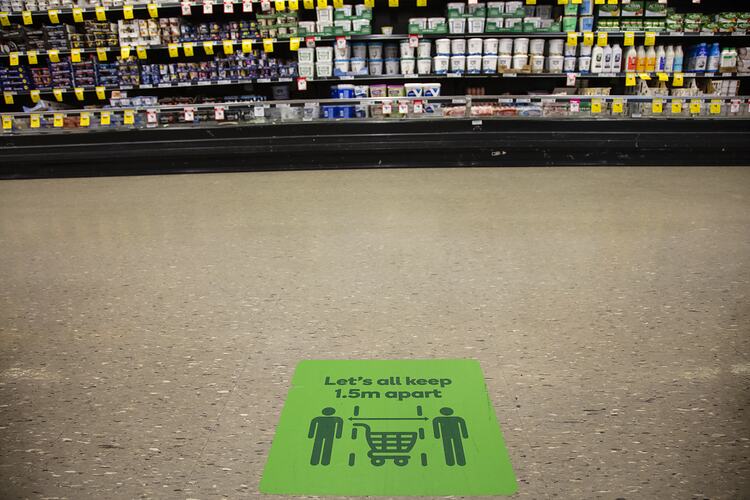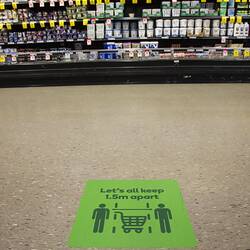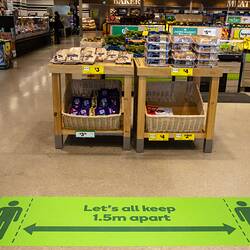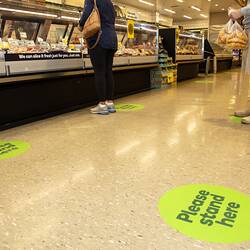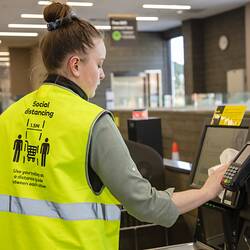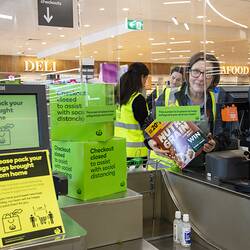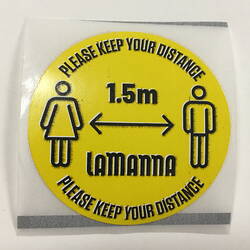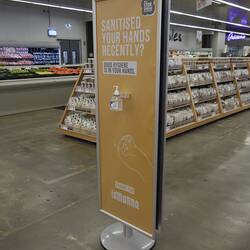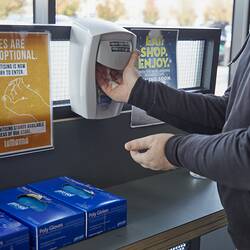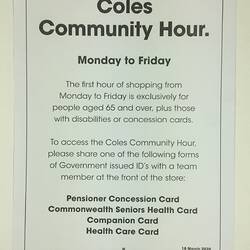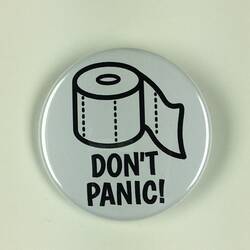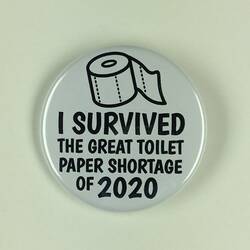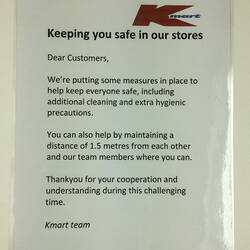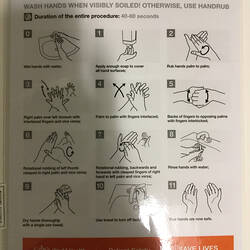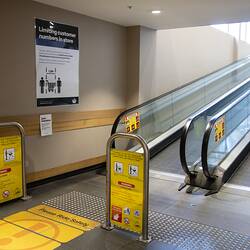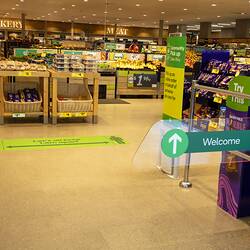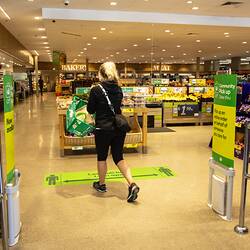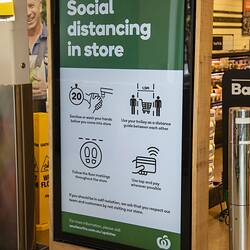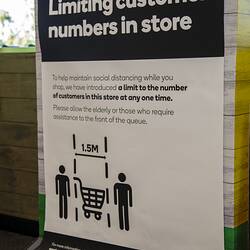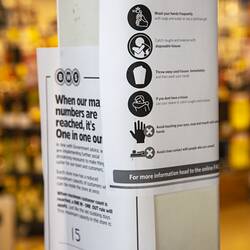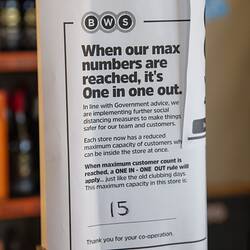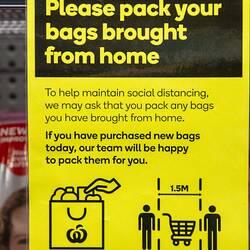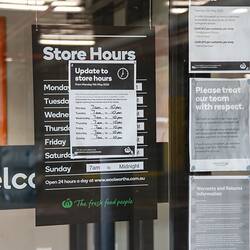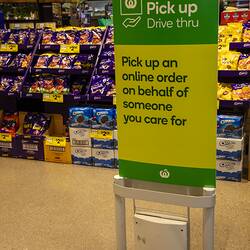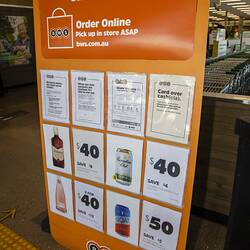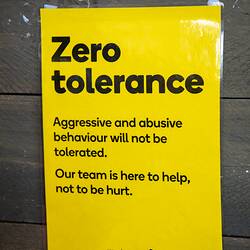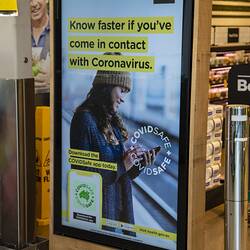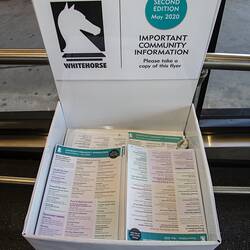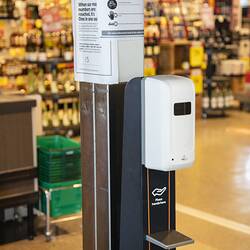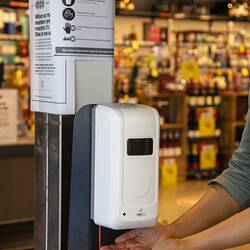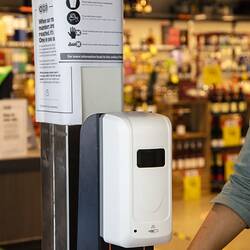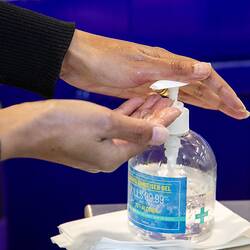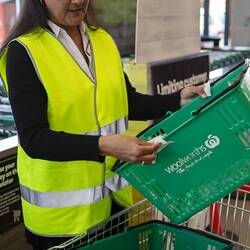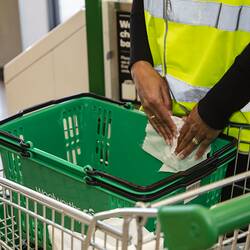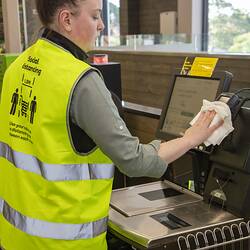'Keeping a Trolley-Length Apart': Safe Shopping in Supermarkets During the COVID-19 Pandemic in 2020
From 'sneeze screens', hand-hygiene, and 'keeping a trolley-length apart', to online shopping, contactless payment and community shopping hours, the COVID-19 pandemic has changed the face of supermarket shopping - for the foreseeable future, at least.
When the pandemic hit Australia in early 2020, government directives saw supermarkets, as well as the broader retail industry, deliver a raft of public health initiatives, to keep staff and customers safe from corona virus infection. These were based around Australia's core COVID-19 public health measures of social distancing and hygiene.
Supermarkets are an interesting case-study of COVID-19 impacts. They were one of the few types of retail businesses that stayed open during all of the lockdowns, to provide essential food and goods - even as panic buying emptied their shelves. With supermarkets located in most suburbs and towns across the country, most Australians had some type of interaction with a supermarket during the pandemic. With such widespread distribution and playing a central role in our communities, supermarkets were under scrutiny to provide a safe shopping environment and encourage confidence in both their customers and staff. They also held a unique and influential position to help change consumer behaviour to be COVID safe ie to stop the spread of the virus and save lives.
Bound by legally enforceable government directions, supermarkets relied on government public health advice as well as the expertise of grocery industry groups and, in the case of some of the larger corporations, their own in-house medical experts, to shape policy and practices for safe shopping. They also drew on their own company knowledge of their customer base. The four large supermarket chains in Australia - Woolworths, Coles, Aldi and IGA - also worked together to develop agreed guidelines on COVID-19 risk management, guidelines which probably also flowed on to influence smaller, independent businesses.
Museums Victoria has documented the extraordinary changes that the COVID-19 pandemic brought to supermarkets in Victoria during 2020, by collecting images, documents, objects and stories relating to social distancing and hygiene in a variety of urban and regional locations, and in different supermarkets, including Woolworths, Coles, IGA and LaManna. Collection material currently dates from March to June 2020, but we are in the process of updating the collection to record the experience of supermarket shopping as it evolved in the second half of 2020.
We also aim to expand our insights into the experience of supermarket shopping during the pandemic with a range of personal stories from customers and staff. We are further aiming to broaden our documentation by incorporating photographs and stories relating to small corner shops and businesses in shopping strips such as green grocers and butchers, which had a different experience of the pandemic than large multi-national supermarket chains.
Social Distancing
Supermarkets rolled out a wide variety of social distancing measures to provide a safe shopping environment. One of the signature measures was the introduction of the soon familiar practice of 'keeping a trolley-length apart', to satisfy the government requirement of everyone staying 1.5 metres apart from each other. Signage was posted prominently throughout stores to promote and reinforce the public health message about distancing. Social distancing markers featuring custom designs for each supermarket chain or independent store were stuck to supermarket floors, as well as at product displays and checkouts. Staff at many supermarkets also had the option of wearing 'high-vis' vests that reminded others to keep 1.5 metres apart.
Supermarkets changed their access and layout to provide more space for customers. For example, every second self-service checkout was closed at Woolworths until 'sneeze screens' were installed to act as a barrier between customers. Some businesses also changed their aisle displays to create more room, while others encouraged one-way traffic down the aisles and created recommended navigation pathways around their stores.
Stores asked customers to pack their own bags and pay using cashless/contactless methods. Card issuers increased thresholds for when pin number entry was required, allowing customers to avoid contact more easily on point-of-sale payment machines at checkout.
Supermarkets installed clear perspex 'sneeze screens' for cashiers to work behind and they also rotated staff more frequently to minimise their exposure to potentially infected customers. And of course, any customer with suspected COVID-19 symptoms or who was isolating with a confirmed positive case was advised not to shop in store. Some supermarkets did temperature checks during the first few months of the pandemic, aiming to exclude anyone with a fever.
Following government guidelines, supermarkets also enforced customer numbers in-store and even encouraged the public to stay away from stores by promoting online shopping where customers could select the convenience of either click-and-collect at the store or contactless home delivery. Some supermarkets, such as Woolworths, also implemented 'Community Pick-up' where members of the community could pick up on-line orders for vulnerable people. During peak demand times, however, particularly early in the pandemic when panic buying was widespread, click-and-collect was temporarily halted and home delivery was limited to priority groups. For example, Woolworths operated 'Priority Assistance' delivery, while Coles introduced 'Community Boxes' and IGA implemented 'Priority Shop', where essential items were delivered to priority, vulnerable households needing groceries.
In order to protect vulnerable community members in store - and also ensure they could access essential goods during panic buying periods - several of the major supermarkets also introduced 'Community Hour', a dedicated time where community members such as the elderly, disabled and immune-compromised could shop in-store without the broader public.
Measures such as priority delivery and dedicated shopping times helped to keep at-risk members of the community at home and protected from exposure to COVID-19, but they also worked to manage product shortages and control the supply of goods to vulnerable customers during panic buying periods.
Hygiene
Hygiene was the second key health strategy emphasised by supermarkets. Hand sanitising stations were established at store entrances, and staff and customers were encouraged, or even required, to use them. Trolley wipes were also provided by some supermarkets for customers to use, and at certain points in the pandemic some stores had dedicated staff on duty to clean trolleys and baskets. Some supermarkets, such as the independent family business LaManna, provided disposable gloves for customers to use while shopping, while some supermarkets provided gloves as a PPE option to staff.
Increased store cleaning was implemented from early in the pandemic, with 'high-touch' surfaces such as trolleys baskets, checkouts, counters, self-service screens and pin-pads being frequently sanitised. Supermarkets also closed early during the first months of the pandemic to allow for extended daily cleaning (and restocking), and special 'deep cleaning' of entire stores was carried out when positive COVID-19 cases were identified as having shopped or worked there.
COVID Normal Shopping
Despite all of these social distancing and hygiene measures, and public communication campaigns such as television commercials and social media posts designed to reassure customers that supermarkets were safe, there were still some COVID-19 outbreaks at supermarkets, as there were at other businesses.
Many customers still didn't feel safe, regardless of all the public health protections, and avoided shopping in store at their local supermarket during the peak of the pandemic. Staff, as essential workers, didn't have as much discretion about coming into the supermarket and had to put trust in their employers that they were in a safe workplace. Some were frustrated by the lack of safety measures at their workplaces and anxious about the risk of contracting COVID-19.
Nonetheless, on the whole, supermarkets successfully introduced large scale changes that made shopping safer - and changed the experience of buying groceries in ways we could never have imagined prior to the COVID-19 pandemic. Not only were stores physically transformed to be 'COVID-safe', but Victorians learnt to adopt 'COVID-safe' behaviour. While it was challenging for many to come to terms with, especially in the beginning, sanitising our hands and keeping a trolley distance away from other shoppers has become a part of life and will remain so for some time to come.
References
Museums Victoria related collection material (see attached items on this webpage)
'Our Shop is our Home': LaManna Supermarket Essendon Fields & the COVID-19 Crisis', Museums Victoria Collections Online Article by Nick Crotty, published 2020
Interview with Senior LaManna Manager, by Nick Crotty, Thursday 11 June 2020.
LaManna email list and Facebook posts on Friday 10 July, Saturday 11 July, Sunday 12 July 2020, Friday 24 July 2020.
Various websites as noted below, accessed between April and November 2020
https://www.woolworths.com.au/shop/discover/shopping-online
https://www.woolworthsgroup.com.au/page/about-us/our-covid-19-response
https://covid.woolworths.com.au/
https://covid.woolworths.com.au/covid-safe/in-stores-and-online.html
https://www.aldi.com.au/en/covid-19-latest-updates/covid-19-faqs/
https://www.aldi.com.au/en/covid-19-latest-updates/commitments-thank-you/
https://www.aldi.com.au/en/covid-19-latest-updates/customer-notices-covid-19-cases/
https://www.iga.com.au/update/
https://www.coles.com.au/covid19#health
https://www.colesgroup.com.au/news/
https://www.lamannas.com.au/covid-19-updates/
More Information
-
Keywords
-
Localities
-
Authors
-
Article types
